Let the EOPs Begin
It's that time of year where growers can reap some BIG savings with Early Order Programs and special fall promotions. The promotions vary from company to company, but often consist of significant discounts and extended payment terms. Fall programs have been known to offer previous year pricing, free product or special rebates. The bottom line is fall is an excellent time of year to purchase crop protection products for the remainder of this year and perhaps even the next growing season.
I'm aware of a couple of programs that've already kicked off, but before we get there, let's do a quick diagnostic challenge and play one of your favorite features, "What's Happening Here?"
What's Happening Here?
Take a look at the peony below:

I think you'll agree there's something not quite right with this plant. Is this appearance due to cold damage, phytotoxicity or perhaps you're looking at a bacterial, fungal or viral issue? Maybe it's something else. Take another look, enjoy the newsletter and I'll reveal the answer before signing off. Good luck!
Fall Programs from Bayer
Alright, now that I've got your brain spinning with the possibilities of what's going on with the peony, I'd like to get back on track and tell you about a couple of savings opportunities Bayer is offering.

Growers will receive one FREE bottle of Broadform fungicide when they purchase four bottles. Who doesn't like free stuff (or a 20% savings if you do the math)!
This promotion applies to purchases made during the months of August and September 2019. June 2020 payment terms are also being offered with this promotion. Visit Broadform Fall Program webpage to learn more.
Bayer's second promotion is offering growers up to 8% savings when they purchase Marengo pre-emergent herbicide during the months of August and September 2019. This promotion also includes June 2020 payment terms. The details of this program can be found by visiting the Marengo Fall Program webpage.
BASF's Fall Grower Event
BASF has a Fall Grower Event program were growers can receive special pricing on many of their agency products. This year, up to 5.15% savings can be obtained on FreeHand pre-emergent herbicide, Orkestra Intrinsic fungicide, Pageant Intrinsic fungicide, Pylon miticide-insecticide, Sultan miticide and Ventigra insecticide with purchases made between August 1 and October 31, 2019. Qualifying purchases will also receive June 7, 2020 extended payment terms. For program details, visit betterplants.basf.us/GrowerEvent.

Growers who meet the yearly qualifying purchase levels will also receive rebate incentives of up to 7% through BASF's year-long Grow More, Save More program in addition to the Fall Grower Event savings. Learn more online at betterplants.basf.us/GrowMore.
There's another special savings opportunity I'd like to pass along: During the month of October 2019—and only October—there's an additional 7% cash rebate on purchases of FreeHand for customers whose purchases qualify for the Grow More, Save More program. Add the savings from these programs together and you'll be saving some serious loot on FreeHand.

More EOPs on the Way
Look for more Fall Savings programs from other companies in the weeks and months ahead. Syngenta, Nufarm, FMC, Sepro and Corteva Agriscience are other companies that had savings programs last fall and I anticipate will be offering savings opportunities again this fall.
I haven't received specifics, but I'll pass them along as I receive them in future newsletters. If you work at one of these companies or somewhere else and have a EOP this fall, please forward me (pplion@ballpublishing.com) the details so I can be sure to pass them along to Perennial Pulse subscribers.
Plants to Promote in 2020
Each year, the National Garden Bureau (NGB) names their "Year of the ..." plants. (For example, NGB named 2019 the year of Salvia nemorosa.) Every year, these plants are promoted nationally. This means there'll likely be more interest in them, which could led to more sales opportunities.
I just caught wind of the 2020 selections. They are:
2020 Flowering Shrub: Year of the Hydrangea

Hydrangea LA Dreaming
2020 Bulb: Year of the Iris
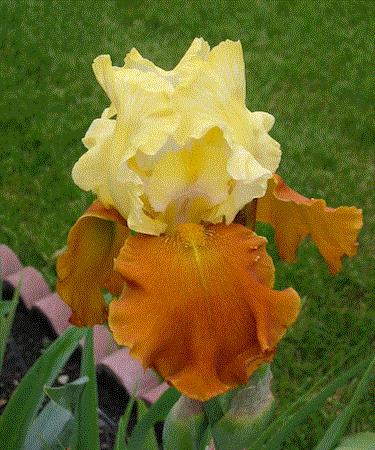
German Iris Fall Fiesta
2020 Perennial: Year of the Lavender
|
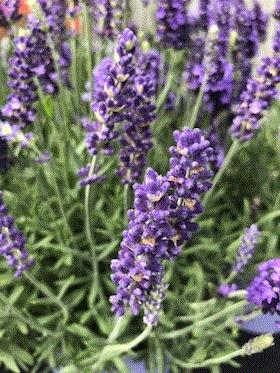
Lavender angustifolia Blue Spear
|
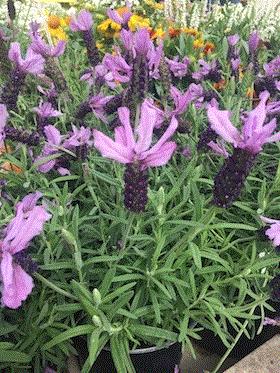
Lavender stoechas Javelin Forte Deep Purple
|
2020 Annual: Year of the Lantana
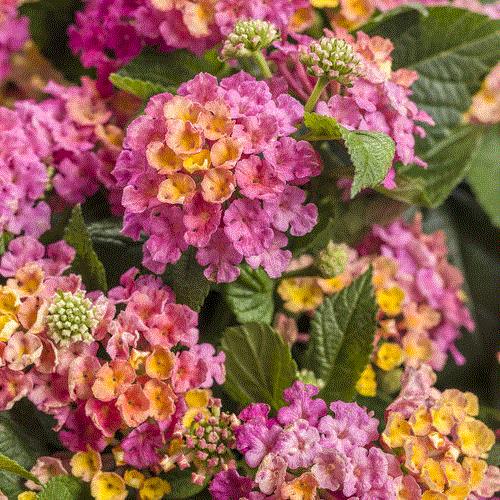
Lantana Luscious Royale Cosmo (I had to include an annual here because I know many perennial growers produce them.)
Please note the "Year of the ..." program promotes an entire genus rather than specific cultivars within a genus. The cultivars shown above were my selections and for illustrative purposes only.
Visit the National Garden Bureau website for photos, logos, fact sheets, signage, PowerPoint presentations, "Did you know?" materials and more on the "Year of the ..." programs. Please note this information for the 2020 selections won't be available on the NBG website until November 1, 2019, however, you can still obtain information for the current and previous year's selections.

The Answer is ...
At the top of the newsletter, I shared the image below and challenged you to correctly identify the cause of the spotted peony leaves:
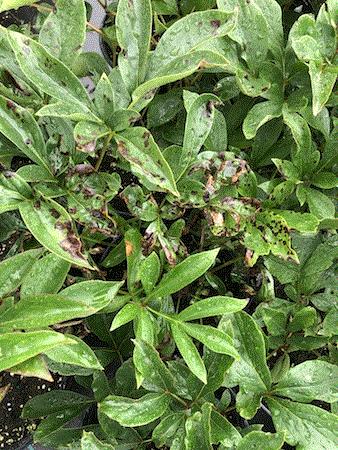
I hope I didn't throw you off the track when I suggested a few possibilities (cold damage, phytotoxicity or bacterial, fungal or viral issue). I'd feel really bad if I led you astray. Well, I guess it's a good thing that the answer is one of the ideas I suggested. But which one was it?
If you answered bacterial leaf spots, you successfully completed this week's diagnostic challenge. These leaf spots were caused by Xanthomonas. Here are a few considerations for managing bacterial leaf spots:
-
It's best to apply bactericides preventively or only when a low level of bacterial leaf spots are present.
-
For most crops susceptible to bacterial diseases, it's best to apply bactericides at seven- to 14-day intervals. Shorter application intervals should be used when rainy periods are frequent. Longer durations are acceptable during extended periods of dry conditions.
-
With bactericides, higher spray volumes are critical to ensure good coverage.
My approach is to rotate between copper-based fungicides, such as Phyton 27, Kocide 3000 Kalmor or Camelot O and the disinfectant/fungicide/bactericide KleenGrow. There's research data showing the amount of control of bacterial leaf spots with copper fungicides can be increased by tank mixing them with mancozeb fungicides (like Protect or Dithane or using a premixed formulation such as Junction, which contains both copper and mancozeb).
Several bio-fungicides containing various strains of Bacillus—such as Cease, Stargus, Triathlon BA and Double Nickel—have also been shown to provide good control of bacterial leaf spots, especially when applied preventatively.



Thanks for reading this edition of Perennial Pulse. Please let me know if you have any questions or article ideas for future newsletters.
My email is ppilon@ballpublishing.com.
Take care,
Paul Pilon
Editor-at-Large
Perennial Pulse
This email was received by you and over 34,242 subscribers!
If you're interested in advertising in Perennial Pulse, contact Kim Brown ASAP and she'll hook you up.